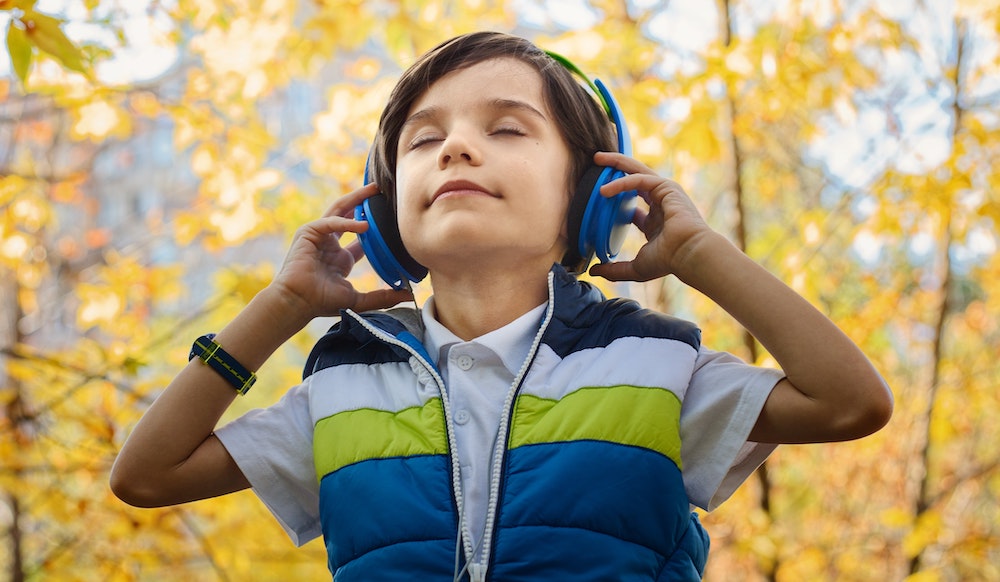Brown Noise – Why It’s Even Better Than White Noise For Kids And Adults
Brown noise is a frequency on the noise color spectrum and has been used to treat ADHD in children. It also became a viral Tiktok trend
This article is more than 2 years old
If you are one of the many who find it difficult to get a decent night’s sleep, there may be hope, especially for those who don’t care to take the medicated route. Believe it or not, it comes in the form of noise and it is the calm, comforting cousin to the more popular white noise. It is called brown noise and it is becoming somewhat of a TikTok trend for those who are getting desperate for some relaxed shuteye.
BROWN NOISE IS BEING USED TO TREAT ADHD

Brown noise has always been here, it has just lingered in the background behind its more popular counterpart, white noise. But recently, over the summer, brown noise began to start making, well, noise. The A.D.H.D. community picked up on it and since that time, it truly has become a thing.
As brown noise started gaining traction, people began to upload their videos showing their reaction to hearing it for the first time. Many of these people claimed that it allowed their brains to feel something it hasn’t felt in a long time – calm. They said that it muted their internal conversations and told viewers to try it as it not only would help them with their focus. And it could also help dampen stress, and more importantly, help them sleep at night.
This growing fad seems to only be getting bigger. Search YouTube and you will see brown noise videos that are eight-, 10-, and 12 hours long, which have already been viewed (or listened to) millions of times. If you are a Spotify junkie, there are playlists along with special apps to play them.
According to Cleveland Clinic Akron General child and adolescent psychiatrist, Dr. Shivnaveen Bains, “It’s definitely a trend going on.” Dr. Bains treats patients with A.D.H.D. and says many come in asking about white and brown noise and then point to the numerous posts on social media about them.
Over the past couple of decades, scientists have discovered that sounds like brown noise can help the brain to relax, focus, and to sleep. Especially people who suffer from A.D.H.D.
Experts, though, agree that it can be very difficult to separate the noise by color, so the differences in how they affect the listener aren’t so well defined. These noise colors (white, brown, pink) oftentimes sound similar, making it hard to conclude which color, if any, is the most effective. Let’s see what this color thing is all about.
BROWN NOISE IS A FREQUENCY ON THE COLOR NOISE SPECTRUM
So, what exactly is brown noise? According to Dr. Daniel Berlau, a professor at the Regis University School of Pharmacy, the human ear can only detect (hear) sounds within a specific range of frequencies. Brown noise, says Dr. Berlau, is every frequency the human ear can hear, all together in one sound.
This “noise,” listened to all at one time, can create a listening experience that can be considered somewhat smothering and immersive, but one that many people have found to be pleasant. Ultimately, though, it comes down to the listener as to which noise color is more pleasant. Those on the A.D.H.D. spectrum appear to favor brown noise.
There are a number of colors that relate to the noise spectrum. There are the aforementioned brown, white, and pink noises. There is also violet and gray noise as well.
When you compare the colored noises, the most popular – white – offers more of a hissing sound as the higher frequencies sound louder. Pink noise is similar to white noise, but it plays the lower frequencies a little louder to knock down some of the hissings you get with white noise.
Brown noise, on the other hand, gets its soothing feel by turning up the lower frequencies much louder, truly taking away the hiss heard in white noise.
As mentioned, brown noise contains all frequencies that the human ear can hear, it just does a much better job with the lower frequencies. Most people can easily tell the difference between white and brown noise. The ear knows what’s best for it.
BROWN NOISE ACTUALLY COMES FROM BROWNIAN NOISE
Where does brown noise come from? The first thing you should know is that the “brown” in brown noise doesn’t come from the color, instead, it comes from the famed botanist, Robert Brown.
Back in 1827, Brown came up with Brownian motion, which boils down to the movement of multiple types of inanimate objects in water, such as pollen. These are also known as “signal noises.”
#BROWNNOISE BEGAN TRENDING ON TIKTOK
Yes, it’s a thing. So much so that it has garnered close to 86 million views on TikTok. People have flocked to brown noise like a moth to a flame, swearing left and right that it is the end all, be all when it comes to rest and relaxation, but is it?
Dr. Berlau has his doubts. “I don’t think there’s anything magical about brown noise,” he said via The Guardian. “I think all of those sounds can have similar effects on the brain, but people like what brown noise sounds like, so that’s the one that catches on. It sounds like, for this ADHD community on TikTok, they’ve identified brown noise as something that helps them, which is terrific.”
Although millions of TikTokers are swearing by the effects of brown noise, there really hasn’t been much research conducted to prove them right or wrong. According to Dr. Berlau, though, “it does make sense” that those with A.D.H.D. could get relief from brown noise.
As he points out, those suffering from it, don’t have what regular brains have and that is a regular dose of dopamine, which is why they have “constant thoughts they can’t really get rid of. Creating this external noise that sort of ‘blankets’ the brain; it makes sense that would calm some of that brain noise. It just hasn’t been confirmed experimentally.”
Dr. Berlau also spoke about the “placebo effect” of brown noise. He says if those on TikTok want to think that brown noise will help them sleep, concentrate better, or relax, then that is exactly what they are going to do. Dr. Berlau points to his son, who suffers from A.D.H.D., and the search they are still undertaking to get him some relief. “My son has ADHD, we are struggling with a variety of treatments and the more evidence and research on this, the better.”
Ultimately, again, it comes down to what you are willing to try if you are having trouble sleeping at night, trouble with your concentration, or trouble relaxing. With as many people who are swearing by brown noise, there is no reason not to give it a listen. You may find that it does exactly what people claim and there is certainly nothing wrong with that.




